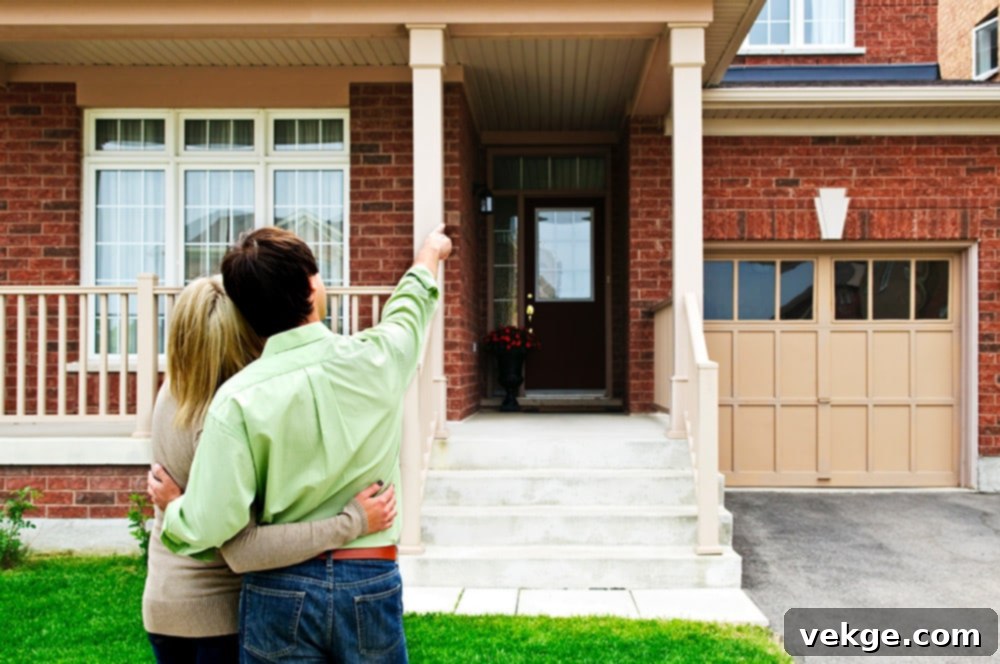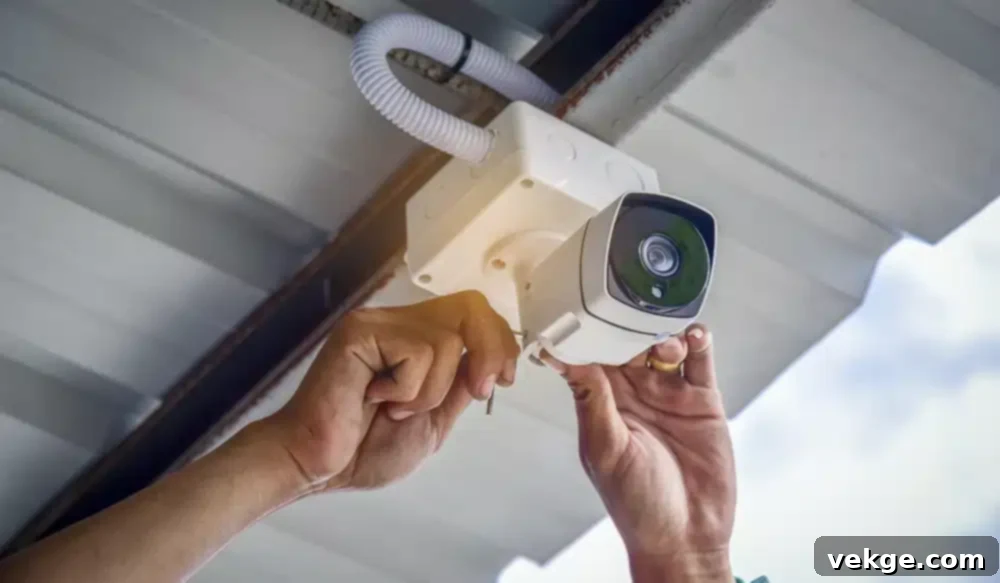Ultimate Guide to Home Security and Safety: Protecting Your Family and Property
Ensuring the safety and security of your home is a paramount concern for every homeowner. A secure living environment not only deters potential intruders and prevents accidents but also provides invaluable peace of mind for you and your loved ones. Achieving this level of protection requires a proactive and comprehensive approach, covering every facet of home security and safety. This involves everything from fortifying your home’s most vulnerable points to preparing for unforeseen emergencies.
This in-depth guide is designed to walk you through essential strategies and practical tools for making your home a safer haven. We’ll explore securing entry points, enhancing outdoor defenses, implementing robust fire safety protocols, preparing for various emergencies, and ensuring the well-being of children and pets. For those seeking flexible yet reliable protection, considering the best no contract home alarm monitoring services can offer professional oversight without the burden of long-term commitments, providing an excellent foundation for your home’s security infrastructure.
Securing Entry Points: Your First Line of Defense

The entry points of your home—doors and windows—represent the primary vulnerable spots that intruders attempt to exploit. Strengthening these areas is crucial, as their security directly correlates with your home’s overall resistance to break-ins. Focusing on robust materials, advanced locking mechanisms, and smart deterrents will significantly reduce the risk of unauthorized access.
Fortifying Doors
Start by thoroughly inspecting all exterior doors. They should ideally be constructed from solid hardwood, steel, or fiberglass, offering superior resistance compared to hollow-core doors. The most critical component of door security is the lock. Invest in high-quality deadbolt locks, which offer a significantly higher level of security than standard spring-latch locks. A good deadbolt should have a throw bolt that extends at least one inch into the door frame.
Beyond the lock itself, consider reinforcing the door frame with longer screws (at least 3 inches) to anchor the strike plate directly into the wall studs. This prevents the frame from splintering under force. For added visual security and convenience, install a wide-angle peephole or a smart video doorbell. These devices allow you to identify visitors before opening the door, adding an extra layer of protection and control over who enters your home.
Enhancing Window Security
Windows, especially those on the ground floor or easily accessible areas, require robust security measures. Ensure all windows are equipped with strong, functional locks, such as sash locks, wedge locks, or key-operated locks. For an extra layer of protection, consider installing window bars or grates, particularly on basement or ground-level windows. While effective, ensure these can be quickly opened from the inside in case of an emergency.
Modern advancements offer additional security options. Impact-resistant glass or security films can make windows much harder to shatter, significantly slowing down a burglar. For comprehensive protection, integrate window sensors into your home alarm system. These sensors trigger an alarm if a window is opened or broken, providing immediate alerts to you and potentially your monitoring service. Always remember to close and lock your windows, even when you’re just leaving for a short while.
Implementing Advanced Home Alarm Systems
Home alarm systems are arguably one of the most effective deterrents against burglaries. These sophisticated systems are designed to detect unauthorized entry and alert homeowners, monitoring services, and even law enforcement in real-time. Modern alarm systems go far beyond simple door and window sensors.
Today’s systems often include motion sensors, glass break sensors, and sophisticated surveillance cameras, offering a comprehensive security blanket. Many systems integrate seamlessly with smart home technology, allowing for remote monitoring and control via your smartphone. When selecting a system, consider whether a professionally installed or DIY option is best for your needs. Moreover, exploring options like no contract home alarm monitoring can provide the benefits of professional oversight without the long-term financial commitment, giving you flexibility while ensuring constant vigilance against threats.
Outdoor Security: Deterring Intruders Before They Reach Your Door

A well-planned outdoor security strategy aims to make your property an unappealing target for potential intruders. By creating an environment that highlights vulnerability, you can often deter criminals before they even attempt to breach your home. Visibility, deterrence, and surveillance are key pillars of effective outdoor security.
Strategic Lighting Solutions
One of the simplest yet most effective outdoor security measures is proper lighting. Most burglars prefer to operate under the cover of darkness. Install motion-sensor lights around the perimeter of your house, especially near entry points, dark corners, and secluded pathways. When an intruder’s movement triggers these lights, the sudden illumination often startles them and makes them highly visible, encouraging them to retreat.
Beyond motion sensors, consider installing timed lights or smart lighting systems that can be controlled remotely. This allows you to create the impression that someone is home, even when you’re away. Ensure pathways, driveways, and any areas leading to your compound are brightly lit. Good lighting eliminates shadows and hiding spots, significantly increasing the perceived risk for potential criminals.
Smart Landscaping and Fencing
Your landscaping can either aid or hinder your security efforts. Tall, dense shrubbery or trees near windows and doors provide excellent cover for intruders. Regularly trim bushes and trees, particularly those close to your house, to eliminate potential hiding spots. Maintain clear sightlines from your home to the street and neighboring properties.
Conversely, strategic landscaping can also act as a deterrent. Planting thorny bushes or prickly plants directly under ground-floor windows or along fences can create a physical barrier that is uncomfortable and difficult to navigate. Additionally, consider secure fencing for your property. While a fence can define your property line, ensure it’s not easily climbable and doesn’t create blind spots. Adding a gate with a robust lock can further enhance your perimeter security.
Outdoor Surveillance Cameras
Modern outdoor security isn’t complete without surveillance cameras. These devices act as both a visual deterrent and a crucial tool for evidence collection. Place cameras strategically to cover all entry points, driveways, and secluded areas of your property. Look for cameras with high-resolution video, night vision capabilities, and motion detection features that send alerts to your smartphone.
Many contemporary systems offer smart features like two-way audio, allowing you to speak to visitors or potential intruders remotely. Cloud storage for video footage ensures that recordings are safe even if the camera itself is tampered with. Visible cameras, perhaps accompanied by security signs, send a strong message that your home is monitored and not an easy target.
Fire Safety: Protecting Lives and Property from Accidental Blazes

While home security focuses on external threats, fire safety addresses one of the most devastating internal hazards. House fires can cause extensive property damage, severe injuries, and tragically, loss of life. Implementing comprehensive fire prevention and response measures is as vital as any security system for safeguarding your family and home.
Effective Smoke and Carbon Monoxide Detectors
Smoke detectors are non-negotiable life-saving devices. Install them on every level of your home, inside each bedroom, and immediately outside sleeping areas. Test all detectors monthly and replace batteries at least once a year, or when they chirp to indicate low power. For enhanced protection, consider interconnected smoke detectors; if one alarm sounds, all alarms throughout the house will activate, providing earlier warnings, especially in larger homes.
Equally important are carbon monoxide (CO) detectors. CO is a colorless, odorless, and highly toxic gas that can be produced by faulty furnaces, water heaters, or other fuel-burning appliances. Install CO detectors near sleeping areas and on every level of your home. Like smoke detectors, they should be tested regularly and have their batteries checked. Dual smoke/CO detectors offer convenience and comprehensive air quality monitoring.
Strategic Placement and Use of Fire Extinguishers
Having functional fire extinguishers readily accessible can mean the difference between a minor incident and a raging blaze. Place fire extinguishers in strategic, high-risk locations such as the kitchen (where most fires start), the garage, near fireplaces, and in utility rooms. Ensure you have the appropriate class of extinguisher for potential fires in those areas (e.g., an ABC-rated extinguisher is versatile for common household fires).
Crucially, ensure every adult household member knows how to operate a fire extinguisher using the “PASS” method (Pull the pin, Aim at the base of the fire, Squeeze the handle, Sweep side to side). Regular checks of your extinguishers are essential to ensure they are charged and ready for use. Always remember that extinguishers are for small, contained fires; if a fire grows quickly or spreads, evacuate immediately.
Developing a Fire Escape Plan
Prevention is key, but preparedness for an actual fire is paramount. Develop and regularly practice a fire escape plan with your entire family. Identify at least two escape routes from every room, mark a safe outdoor meeting point a reasonable distance from your home, and designate someone to call emergency services once everyone is safely outside. Practice crawling low under smoke, checking doors for heat before opening, and knowing how to open security bars or grates if present.
Consider investing in escape ladders for upper-story bedrooms. These simple devices can be critical if primary escape routes are blocked. Regular drills ensure that every family member, including children, knows exactly what to do and where to go in the event of a fire, reducing panic and improving the chances of a safe evacuation.
Emergency Preparedness: Ready for the Unexpected
Emergencies extend beyond just home security and fires. Natural disasters, power outages, and medical crises can strike without warning. Being adequately prepared is a critical aspect of home safety, ensuring your family’s well-being and resilience during challenging times.
Crafting a Comprehensive Emergency Plan
An emergency plan is your family’s roadmap for navigating various crises. This plan should detail specific escape routes for different scenarios (e.g., fire, flood, active threat), designate primary and secondary meeting points both inside and outside your home, and outline clear communication procedures. Include a list of important contact numbers—family members, doctors, emergency services, and out-of-state contacts who can act as a central message point.
Rehearse this plan frequently with your family, ensuring everyone, especially children, understands their roles and actions required. Discuss specific scenarios like severe weather (hurricanes, tornadoes), earthquakes, or extended power outages. Knowing what to do and where to go can significantly reduce panic and improve safety outcomes during real emergencies.
Assembling a Well-Stocked First Aid Kit
A comprehensive first aid kit is an indispensable component of emergency preparedness. It should be readily accessible and regularly checked to ensure supplies are not expired and are replenished as needed. A basic kit should include adhesive bandages of various sizes, antiseptic wipes, rubbing alcohol, pain relievers (paracetamol, ibuprofen), allergy medication, burn cream, gauze pads, medical tape, scissors, tweezers, and a thermometer.
Beyond these basics, customize your kit to include any specific prescription medications your family members need, along with dosages and instructions. Ensure all household members know where the kit is stored and how to properly use its contents. Consider having smaller, portable kits for cars and emergency grab-and-go bags.
Creating an Emergency Supply Kit
In addition to medical supplies, a robust emergency kit should contain essentials for survival and comfort during a prolonged disruption. This includes at least a three-day supply of non-perishable food and water (one gallon per person per day). Other vital items are a battery-powered or hand-crank radio, flashlights with extra batteries, a whistle to signal for help, a multi-tool, a manual can opener, local maps, cash, and important documents (copies of IDs, insurance policies) in a waterproof container.
Don’t forget comfort items like blankets, extra clothing, and hygiene products. For families with infants or individuals with special needs, ensure formula, diapers, specific medications, and any necessary assistive devices are included. Store your emergency kit in a sturdy, easy-to-carry container that can be quickly grabbed if evacuation is necessary.
Child and Pet Safety: Protecting Your Most Vulnerable Family Members

For families with children and pets, home safety takes on an additional dimension. These vulnerable members often lack the awareness or ability to protect themselves from common household hazards. Implementing specific safety measures tailored to their needs is essential for preventing accidents and ensuring their well-being.
Comprehensive Childproofing Measures
Childproofing your home is crucial, especially if you have toddlers or young children. Begin by securing potential falling hazards: anchor heavy furniture like bookshelves and dressers to the wall to prevent tip-overs. Install safety gates at the top and bottom of stairs to block access. Cover unused electrical outlets with safety caps to prevent electrocution.
Store all potentially toxic materials, including cleaning solutions, medications, and chemicals, in high, locked cabinets or out of children’s reach. Use cabinet and drawer latches to secure items that are off-limits. Be mindful of small objects that could pose choking hazards and sharp corners that could cause injury. For homes with pools, strict pool safety measures, including fencing and alarms, are non-negotiable.
Ensuring Pet Safety
Pets are integral family members, and their safety requires careful consideration. Prevent them from accessing small objects they might swallow or substances that are poisonous to their health, such as certain houseplants, human foods (chocolate, grapes, onions), and common household cleaners. Keep all medications, human and pet, securely stored.
Ensure your pets have a comfortable and safe space where they can retreat when feeling threatened or stressed, such as during thunderstorms or fireworks. Keep identification on them at all times through collars with ID tags and consider microchipping for permanent identification. Secure your yard with proper fencing to prevent escapes and protect them from predators or traffic. During emergencies, remember to include your pets in your family’s escape and supply plans.
Conclusion: A Proactive Approach to Lasting Home Security and Peace of Mind
Making a home truly safe is not a single task but an ongoing commitment that addresses multiple facets of security and safety. From fortifying your entry points and establishing robust home alarm systems to enhancing outdoor security, implementing vital fire protection, preparing for emergencies, and safeguarding children and pets, a holistic approach is key. This comprehensive guide has provided actionable insights and practical strategies to minimize risks and create a secure environment for everyone under your roof.
Remember that home safety is an evolving process. Regularly inspect your existing safety measures, update your emergency plans, test your detectors, and stay informed about new technologies and best practices. Investing in your home’s security and safety is an investment in the health, well-being, and peace of mind of all its occupants. By taking these proactive steps, you build a resilient home that stands strong against potential threats, allowing you and your family to live securely and comfortably.
